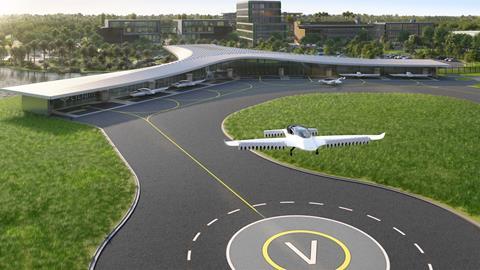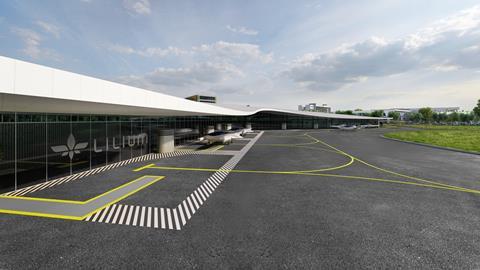German electric air taxi start-up Lilium has unveiled its first operating location in the USA after striking a deal with the city of Orlando, and Florida real estate specialist Tavistock Development.
Located in the city’s Lake Nona suburb, immediately adjacent to Orlando International airport, the first “vertiport” hub will be built by Tavistock, with Lilium paying to use the facility when it launches operations with its Lilium Jet in 2025.

As yet, no other locations have been signed up for vertiport construction, but Remo Gerber, Lilium chief operating officer, confirms that negotiations are under way to develop a network of destinations across the Sunshine State.
While he declines to name the other points, Gerber says the targets are in “key neighbouring towns”. Given the Lilium Jet’s 162nm (300km) range, that includes Tampa on the Gulf Coast, Jacksonville in the north of the state, or Fort Myers to the southwest.
However, Gerber admits that at present, Miami and state capital Tallahassee will not be reachable by the first-generation of the five-seat jet in a single journey.
Although proximity to the airport should help tap into the hub’s 70 million passengers each year, Gerber acknowledges that the location poses airspace integration challenges.
“It is something that we will have to work very closely with the airport on. But that is why we have pilots on our planes.”
While Orlando will be the first location in the USA, Lilium in September signed a deal with Cologne/Bonn and Dusseldorf airports to create the necessary infrastructure at the sites to support regional air services with its aircraft.
Development of the Lilium Jet is continuing at the company’s site in Oberpfaffenhofen near Munich, although coronavirus restrictions appear to have curtailed plans to fly its second demonstrator aircraft this year.

The initial example was destroyed in a February battery fire shortly before the pandemic took hold. Its successor was due to take to the skies at some point in 2020, but Gerber says this is now “anticipated” in the first quarter of 2021.
However, he stresses that the demonstrator is “not really our main focus right now”, with that instead switching to the initial certification aircraft.
Gerber gives no timeline for its first flight, but to meet the “quite ambitious” 2025 service entry target that will likely have to take place no later than 2022.
Dialogue also continues with regulators in Europe and USA as they grapple with the complexities of a new class of aircraft and an all-electric propulsion system. “We are very happy with the engagement,” says Gerber.
Featuring 36 tilting fans spread across two sets of wings – 12 at the front and 24 at the rear – the battery-powered Lilium Jet can take off and land vertically, as well as operating like a regular fixed-wing aircraft.
Rather than short intra-city hops, with its 162kt (300km/h) top speed and 162nm range, the aircraft is pitched against ground transport modes such as high-speed rail.
Gerber does not disclose specific pricing for a journey with the Lilium Jet, but says that it will to be “competitive” with alternative modes. Citing the 70nm sector between New York and Philadelphia as one example, he suggests this would cost around $150-200.
“It is not for your day-to-day trips, but more towards your business traveler,” he says. However, he believes that as the aircraft, its network and the manufacturing system scales up over the coming years “this price will come down quite dramatically”.
Early work has begun to define the pilot training requirements for the Lilium Jet, although Gerber is hopeful that anyone with an existing CPL or ATPL qualification will be able to transition onto the new type with minimal additional instruction.



























